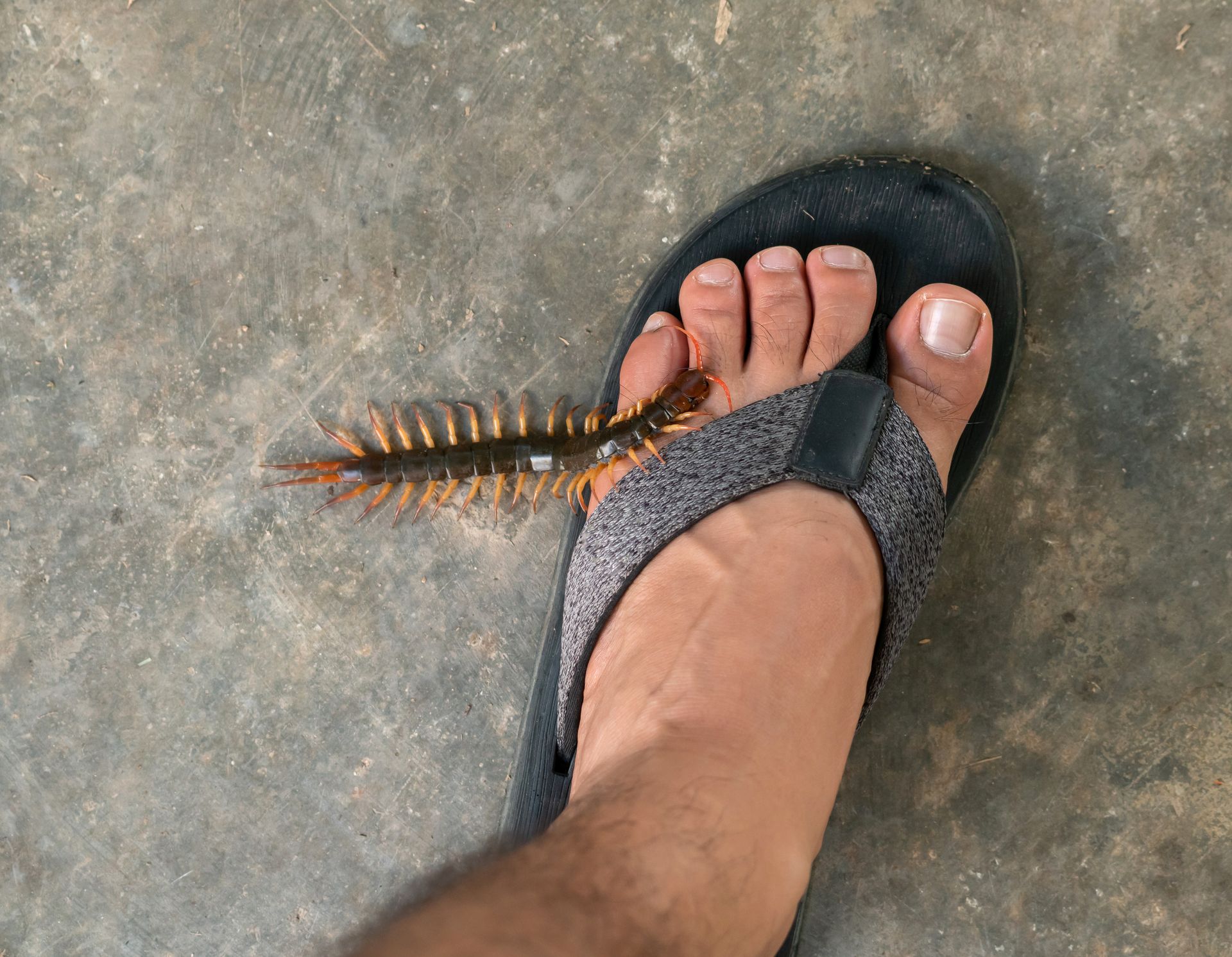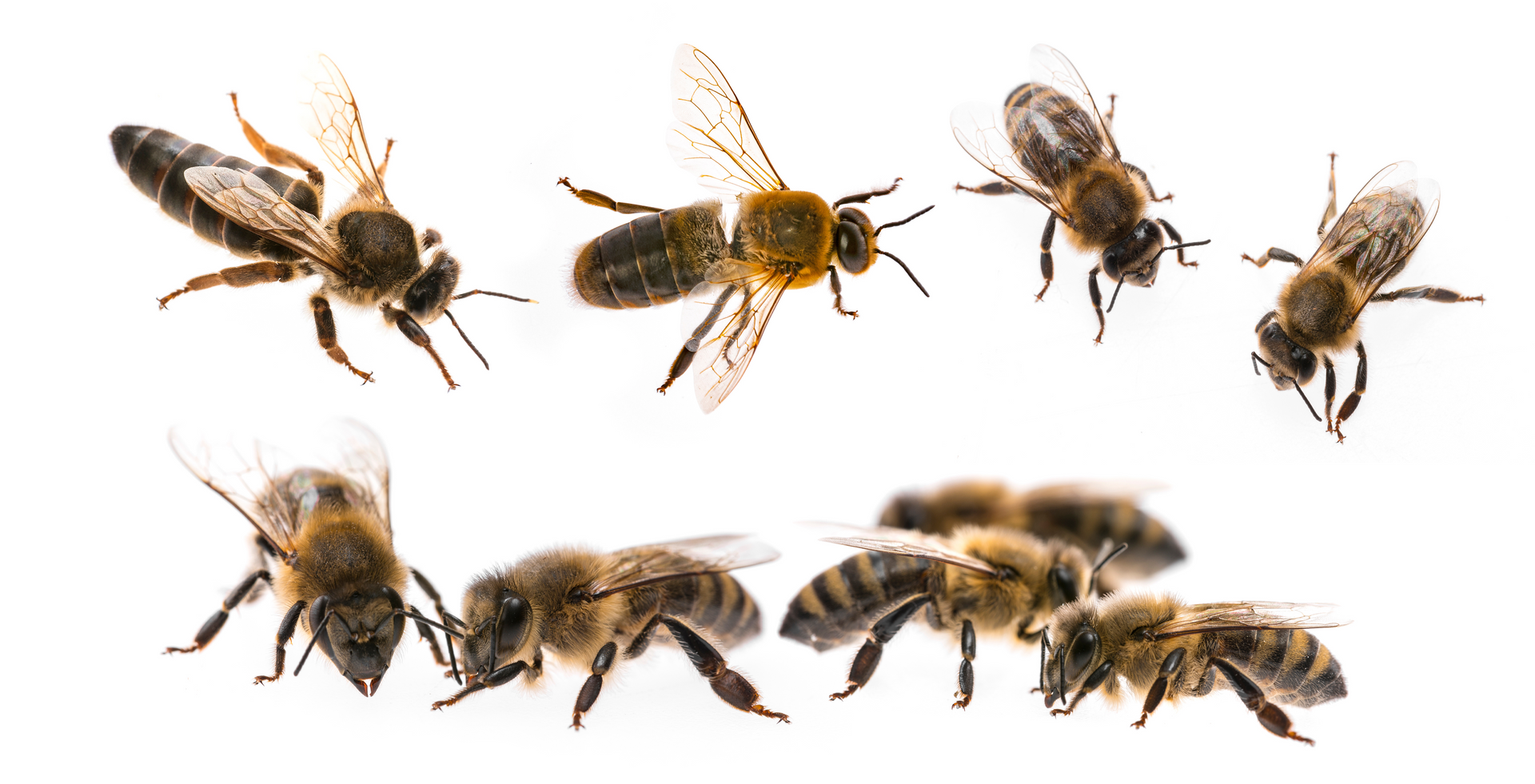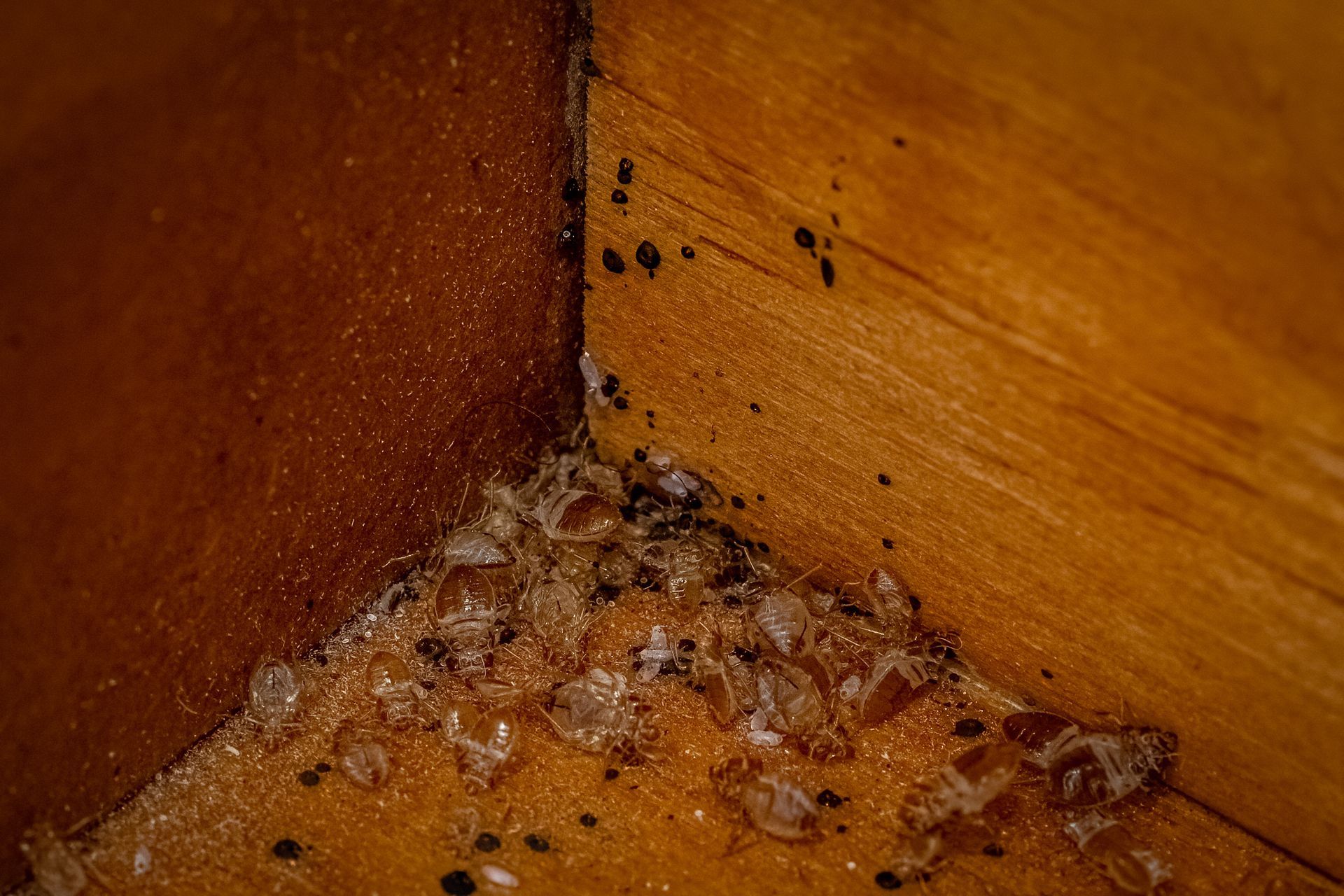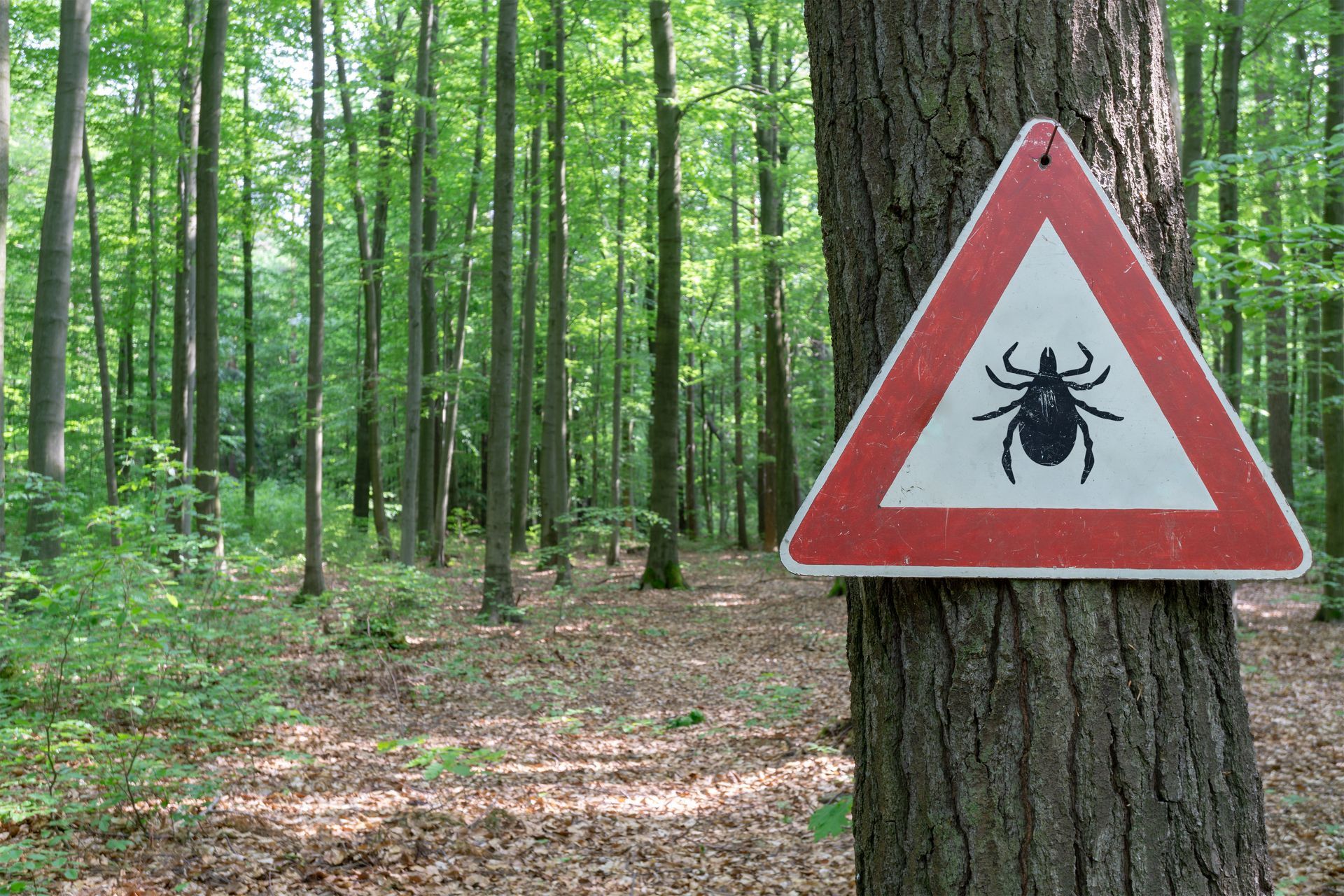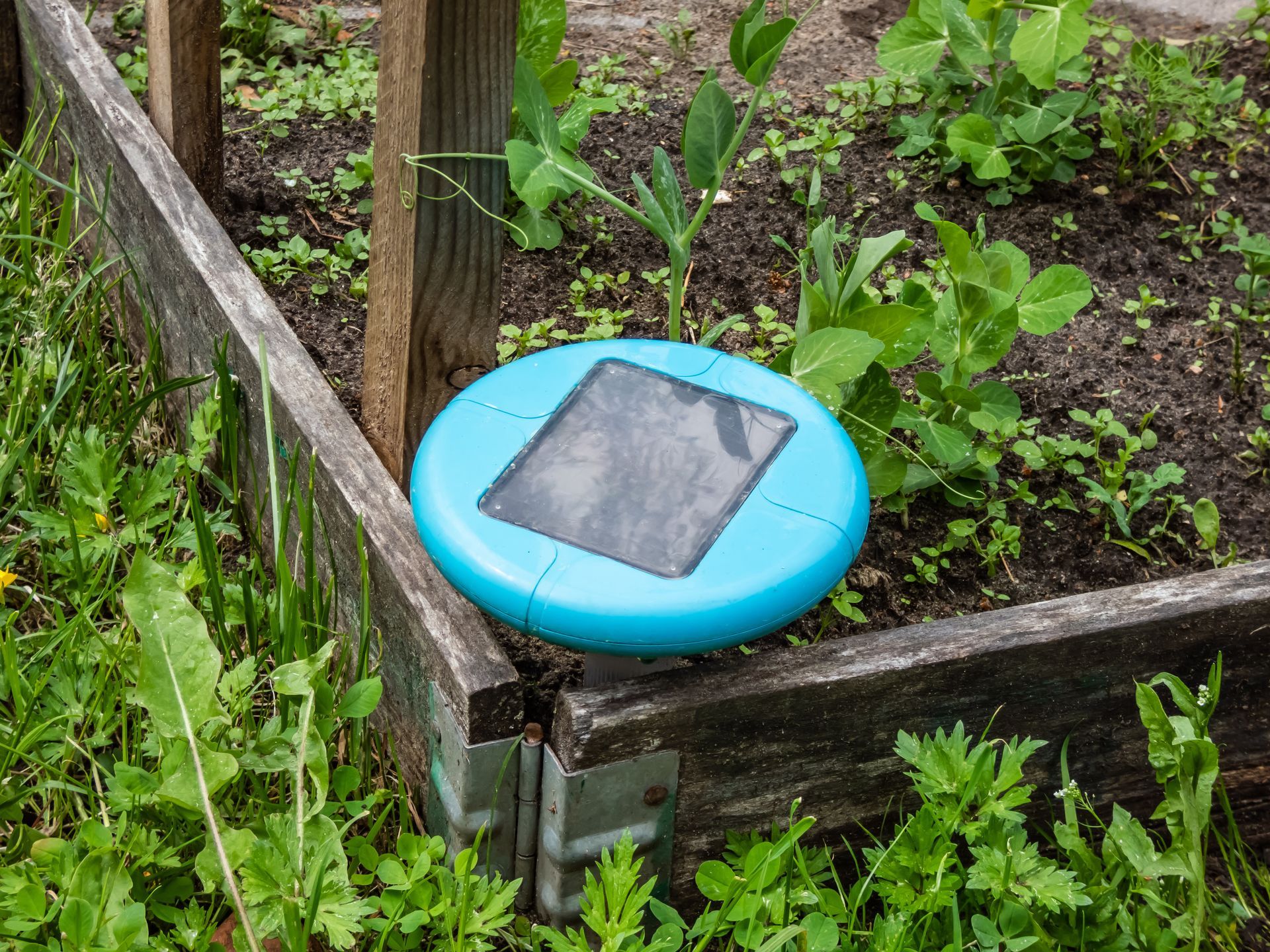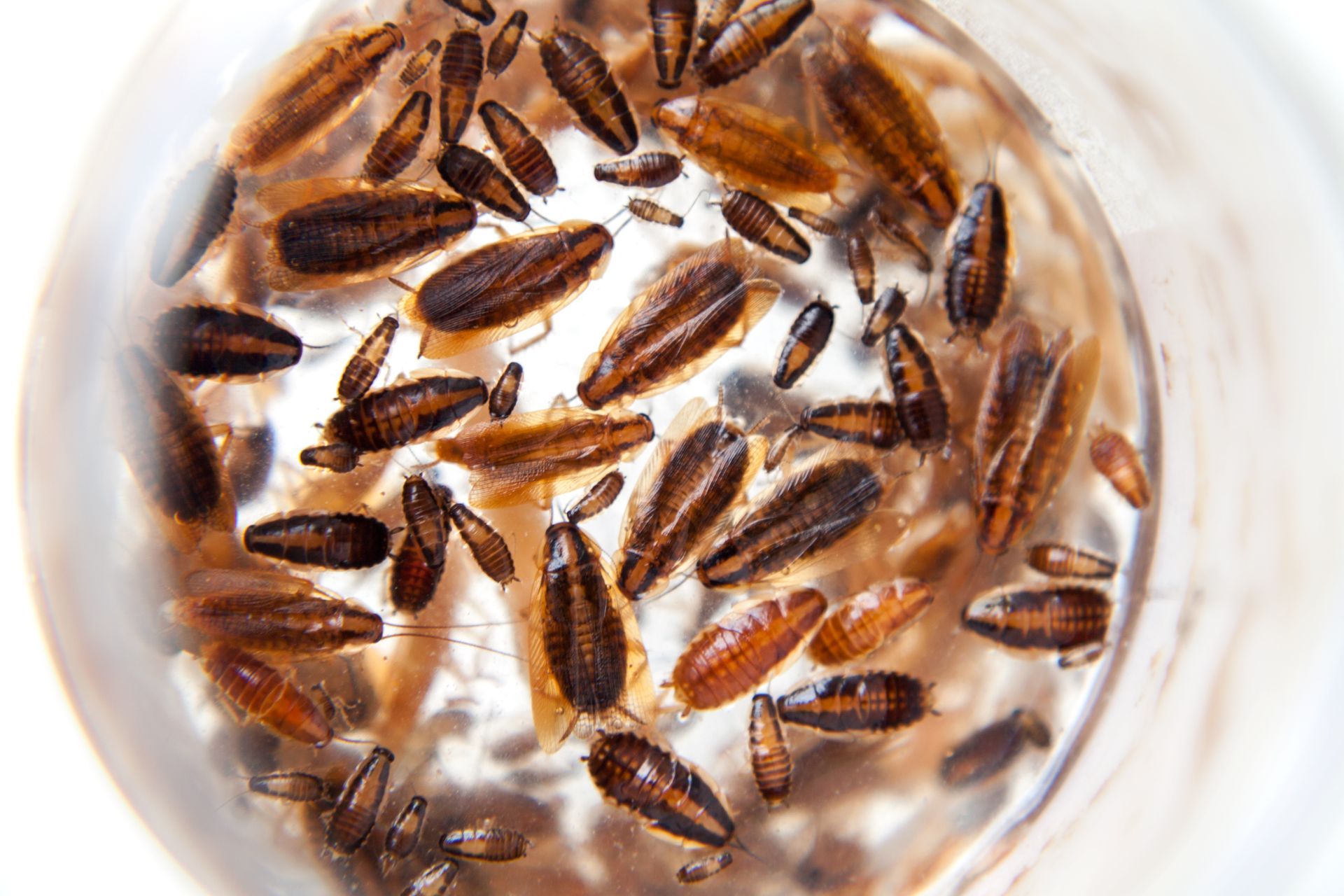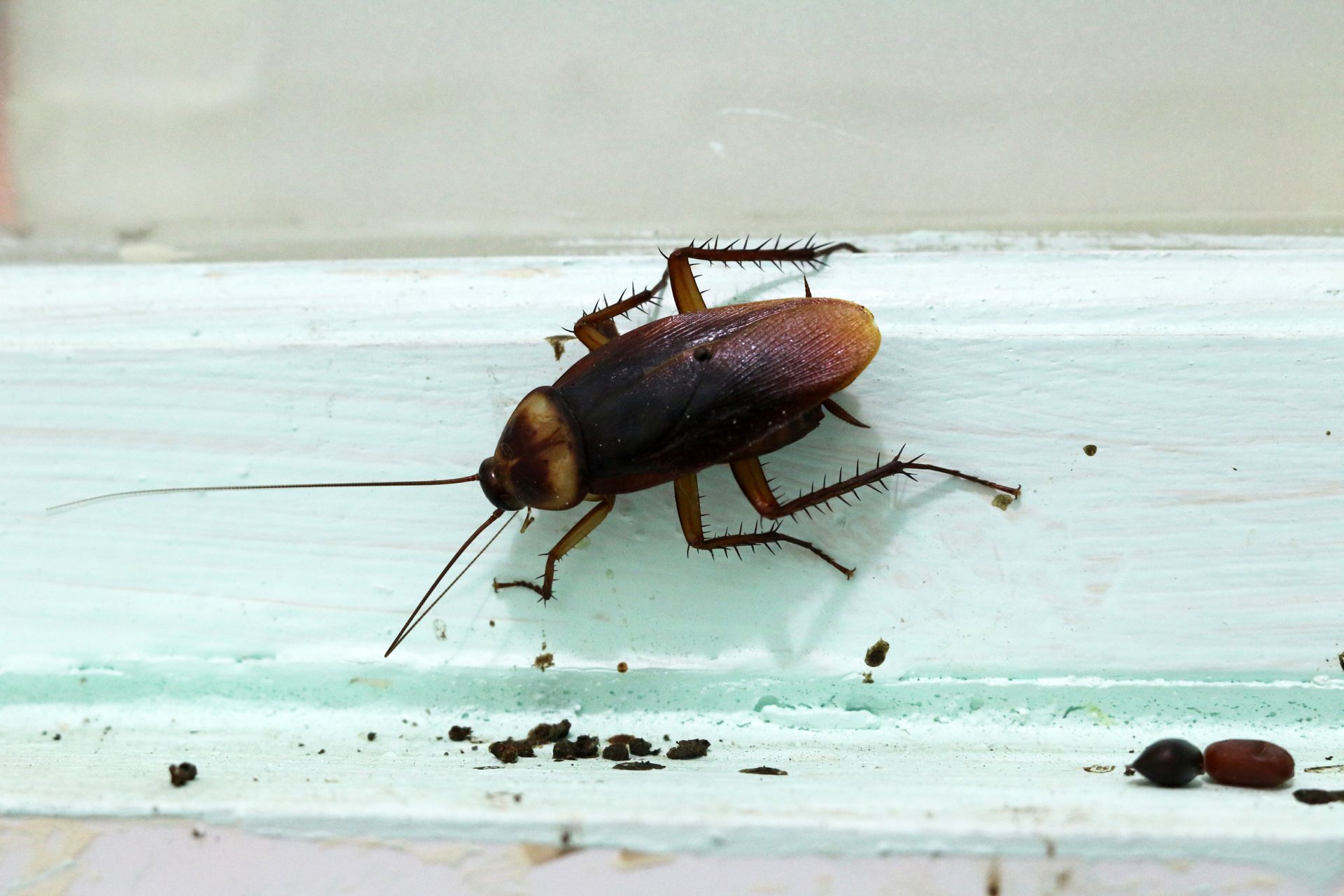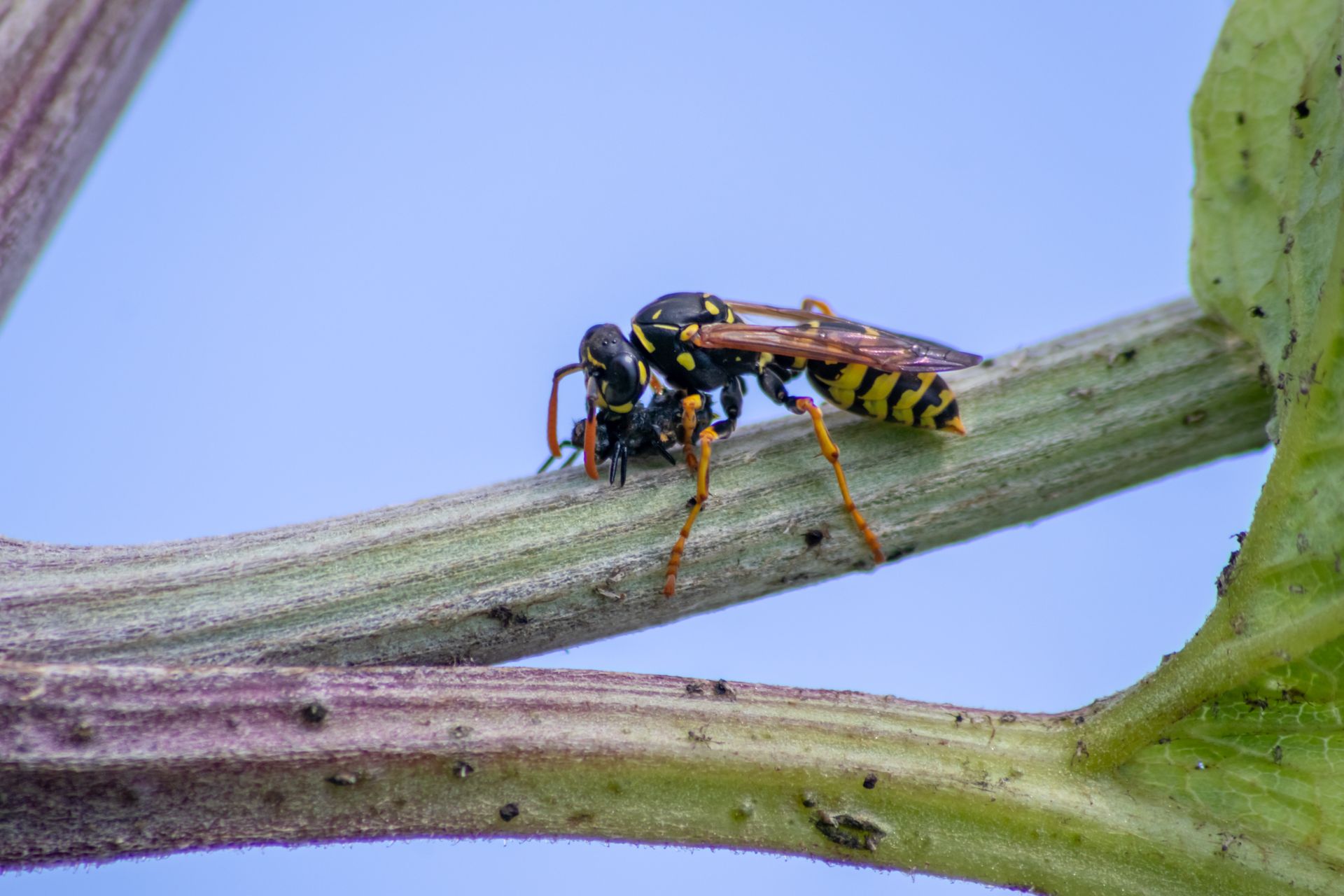How to Get Rid of a Beehive Safely
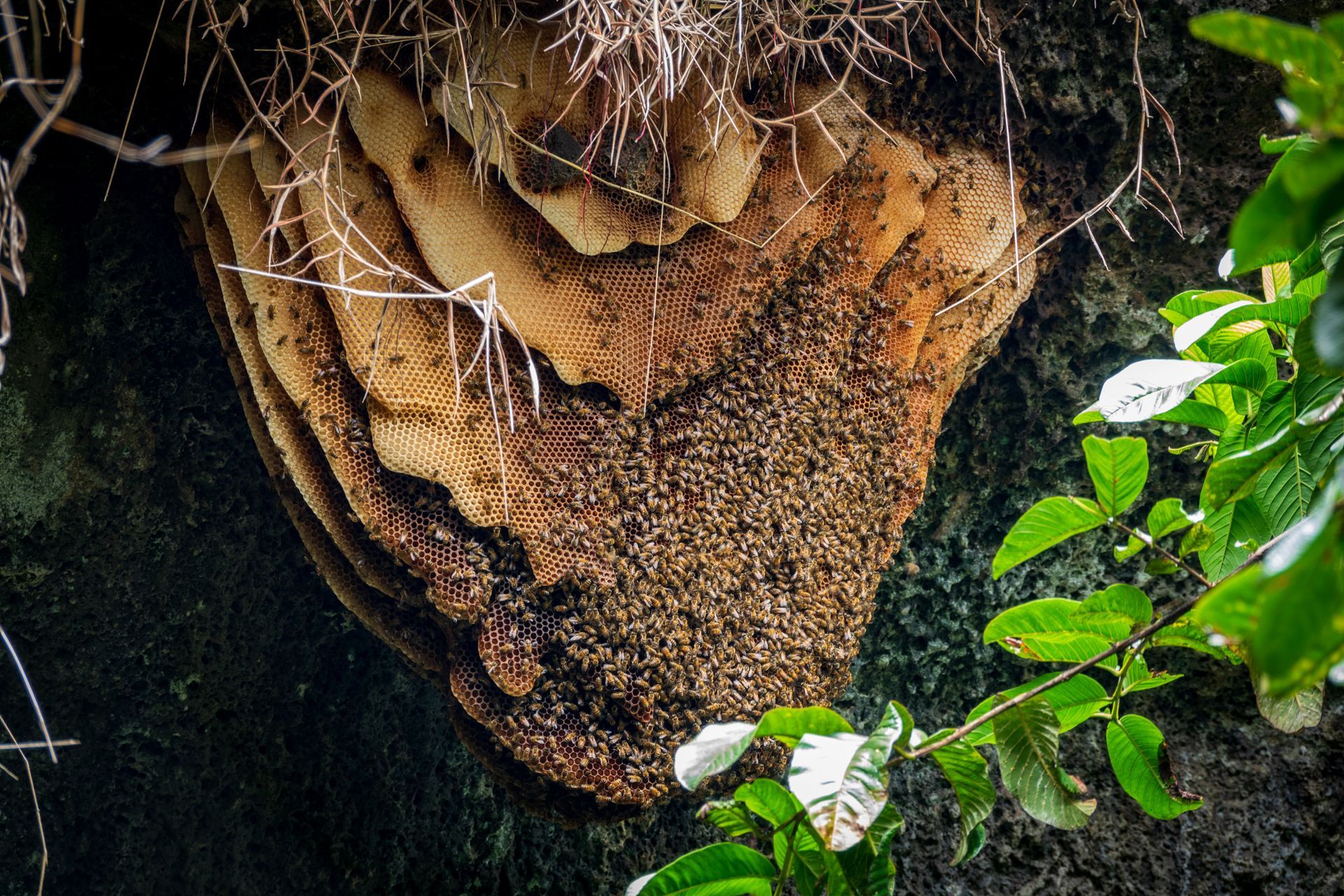
Getting rid of a beehive requires careful consideration and the right approach because bees play a crucial role in our ecosystem as pollinators. Before taking any action, it’s important to recognize that bees contribute significantly to the production of many fruits and vegetables. Given the global decline in bee populations, the U.S. Environmental Protection Agency (EPA) and various conservation groups advocate against the unnecessary eradication of bees. If a beehive near your home poses a threat, the best course of action is to contact a professional who can safely relocate the hive. If relocation isn't possible, hiring a professional pest control service is advisable to handle the removal. Should you decide to remove the hive yourself, ensure you are equipped with proper safety gear, use insecticides as directed, and thoroughly remove all traces of the hive to prevent future infestations.
How to Remove a Beehive Safely
When dealing with a beehive on your property, the safest and most effective approach is to enlist the help of a professional. Professionals have the knowledge, tools, and experience to handle bee removal safely which ensures that the process is thorough and minimizes the risk to you and your family. The following steps outline what to expect when having a professional remove a beehive from your home.
Identify Where the Beehive Is
Identifying where the beehive is located is a crucial first step in the removal process. Bees can establish their hives in various locations, and they often choose hidden or hard-to-reach spots that provide better shelter and security. Here are some common places to find beehives:
- Behind bricks and siding: Honeybees can squeeze into very tight spaces because they only need a gap as small as one-eighth of an inch to enter. Nests in these locations can become substantial as they often go unnoticed for long periods.
- Eaves and soffits: These high, isolated spots are favored by bees for nesting. If left unaddressed, bees can cause significant damage to your roof as well as introduce honey that can attract roof rats, possums, and raccoons.
- Concrete blocks: Hollowed-out cinder blocks offer an ideal nesting site for bees. Like bricks, bees can easily squeeze into or behind concrete blocks which makes their hives difficult to detect.
- Trees: Hollowed-out trees provide a perfect natural shelter for bees, but removing hives from these locations can be challenging due to access issues.
- Under sheds: Bees often nest under floorboards and on support structures of sheds, which typically experience less foot traffic than homes or patios. This allows bees to build their nests undisturbed.
By carefully inspecting these areas, you can accurately identify the location of the beehive and take appropriate steps to ensure safe and effective removal.
Give Bees Space
When dealing with bees, it’s crucial to give them plenty of space to avoid provoking them. Most bees will only sting if they perceive a threat to their hive or queen. By keeping your distance, you significantly reduce the risk of an aggressive response from the hive. Bees often swarm around a branch, bush, or post, with the workers surrounding the queen. Steering clear of these areas minimizes the chances of disturbing the bees and getting stung which allows you to stay safe while arranging for professional removal.
Keep People Allergic to Bee Stings Away
If you have a beehive or swarm on your property, it is crucial to keep pets, children, and anyone allergic to bee stings away from the area. For outdoor hives, ensure that vulnerable individuals stay inside to avoid accidental stings. For indoor hives, contain the affected area to prevent the bees from spreading and minimize potential risks to occupants. Taking these precautions helps protect those who are most susceptible to severe reactions from bee stings.
Try to Avoid Using Pesticides and Traps if Possible
When dealing with a beehive, it's best to avoid using pesticides if possible. Spraying the hive or attempting to trap the bees can be problematic and dangerous. Many insecticides that are commonly available are banned for use near bees by the EPA. Additionally, improperly handling traps can leave you with a container of angry bees and an incomplete solution if not all bees are captured. More importantly, bees play a crucial role in pollinating crops and supporting other wildlife so instead of extermination, consider rescuing and relocating the bees to preserve their beneficial impact on the environment.
Call a Professional Beekeeper or Pest Control Company
When faced with a beehive on your property, contacting a professional beekeeper or pest control company is often the best course of action. If the bees are honeybees, a local beekeeper might be willing to relocate the hive at little to no cost as they can integrate the bees into their operations. To find an experienced beekeeper, you can check with the American Beekeeping Federation, search online, or ask at local farmers' markets, plant nurseries, or stores that sell local honey. Experienced beekeepers possess the necessary skills and tools to safely extract and transfer the hive which will preserve the bee colony while providing a humane resolution to your bee problem.
In cases where the hive is large, located indoors, or involves other bee species, it may be necessary to consult a pest management professional. Exterminators can handle more challenging removals, especially if the hive is hard to reach or extends deep into structures like walls or chimneys. While hiring an exterminator can be more expensive, it ensures that the hive is completely and safely removed. Whether you choose a beekeeper or an exterminator, relying on professionals minimizes risks and ensures effective beehive removal.
Remove Remaining Traces of the Beehive
After a beehive has been removed, it's crucial to thoroughly clean up any remaining traces to prevent future infestations and additional problems. Bees often leave behind honeycombs and other residues that can attract other insects and animals. To avoid these issues, ensure that all remnants of the hive, including honey and wax, are completely removed. Use heavy-duty trash bags to securely dispose of any debris and promptly tie and place the bags in a trash container for pickup.
In addition to removing the physical hive, it's important to repair any damage and seal the entry points that bees used to access your home. Pheromones left by the previous hive can attract new bee colonies to the same spot, so sealing these areas effectively is essential. Scrub the area with soap and water to eliminate any remaining odors and bacteria. By thoroughly cleaning and repairing the affected area, you can prevent new colonies from moving in and ensure your home remains bee-free.
Things to Make Sure of If You Attempt a DIY Beehive Removal
If you decide to attempt a DIY beehive removal, it is crucial to take certain precautions to ensure your safety and the effectiveness of the removal.
Wait for the Right Time for Beehive Removal
When planning to remove a beehive, timing is crucial. The best times to perform the removal are late evening or early morning, as bees are less active and typically inside the hive during these periods. Additionally, late winter to early spring is the ideal season for removal because the hive population is at its smallest. Performing the removal at night can also be beneficial, but make sure to use a flashlight covered with red cellophane, as bees cannot see red light. This strategy reduces the likelihood of agitating the bees and enhances the chances of a successful removal operation.
Wear Protective Gear to Prevent Bee Stings
When removing a beehive, wearing proper protective gear is essential to prevent bee stings. Here is a list of recommended protective gear:
- Heavyweight clothing: Choose light-colored clothing with a smooth texture that covers your arms and legs. A white beekeeper’s suit is ideal.
- Protective gloves: Use heavy durable gloves, preferably leather, to protect your hands.
- Helmet with bee shield: Consider a helmet with an attached bee shield or other face protection.
- Bee veil: A beekeeper's veil offers excellent protection for your face and neck while maintaining clear vision.
- Boots: Opt for protective footwear like boots instead of canvas shoes which bees can sting through.
- Ankle Protection: Secure your pant legs at the ankles using straps or tucking them into socks to prevent bees from accessing your lower body.
- Bee smoker: A bee smoker can help calm the bees during the removal process.
- Sting treatment kit: Keep a sting treatment kit on hand in case of stings.
Avoid wearing heavy scents like perfume, cologne, or scented deodorant as these can attract bees and increase the risk of stings.
Opt for an Effective Bee Insecticide if Extermination is the Only Option Left
Please exhaust every resource and seek professional help before choosing to use insecticides on bees.
If extermination is the only option left for removing a beehive, choosing an effective bee insecticide is crucial. It’s recommended to use a commercial insecticide specifically designed for killing bees rather than homemade remedies as these products are tested for efficacy and safety. Visit a home center to find an insecticide spray marketed for bees or opt for an insecticide dusting powder. Both options have similar application processes and are designed to penetrate the hive effectively.
To apply the insecticide, locate the main entry hole of the beehive, which is usually easy to identify. Hold the nozzle of the spray can directly at the opening and spray for several seconds to ensure the entire hive interior is saturated. If using an insecticide dust, insert the applicator tip into the hole and squeeze to inject the dust into the hive. In cases where the main entry hole is inaccessible, spraying the insecticide all over the outside of the hive can still be effective, though it may require multiple applications over a few days to achieve the desired results. This thorough approach helps ensure that the entire bee colony is eradicated.
Remove Hive After Treatment
After successfully treating the beehive with insecticide, it is crucial to remove the hive to prevent other bees from moving in. Once you no longer observe any bees flying in or out, physically take down the beehive as soon as possible. If the hive is in an accessible location like attached to a tree limb or underneath a carport, you can likely remove it by hand. In cases where the hive is deeply embedded within a hollow tree or building structure, extensive dismantling may be required. Such situations often need professional intervention for safe and effective removal. Ensure you wear the same protective gear used during the treatment process as there could still be a few lingering bees inside the hive.
Ineffective Beehive Removal Strategies
When attempting to remove a beehive, certain strategies can be ineffective and potentially dangerous.
Bee Deterrents Don’t Work
Using soap and water or other deterrents to try and make bees leave their chosen location is generally ineffective. Once honeybees have established a hive, they are highly unlikely to abandon it simply because of these minor irritants. Even if you have only recently noticed the bees, such deterrents will do little to persuade them to move. Bees are very committed to their hives, and it typically requires more direct intervention like relocation by a professional beekeeper or targeted treatment by a pest control expert to remove them successfully.
Don’t Seal Bees Inside Their Nest
Sealing bees inside their nest is not an effective removal strategy and can lead to more significant problems. While sealing the entry point may prevent bees from coming and going freely, it does not eliminate the bees inside, who likely have sufficient food and air to survive for an extended period. Trapped bees will eventually seek alternative exit routes, which often leads them to enter the living spaces of your home if the beehive is indoors. This can result in bees appearing inside for weeks which can create a persistent and potentially hazardous situation. Proper removal by a professional is necessary to ensure the hive is completely cleared and the bees are safely relocated or exterminated.
Don’t Try and Smoke the Bees Out
Attempting to smoke bees out of their nest is not an effective or safe method of removal. While smoking is a technique used by beekeepers to calm bees in controlled environments, using smoke in or around your home can have adverse effects. Instead of driving the bees out, it often forces them deeper into the house which makes removal even more difficult. Additionally, the use of smoke presents significant fire hazards, as improperly handled smoke can ignite surrounding materials and lead to property damage. This approach can cause more harm than good and it’s best to leave bee removal to professionals who can handle the situation safely and effectively.
Important Bee Removal Considerations
When planning beehive removal, it's crucial to consider multiple factors to ensure a safe and successful operation.
Leave the Bees Alone if They Are Not Problematic
f the bees are not causing any issues, it is often best to leave the beehive alone. Bees are experiencing population declines worldwide, yet they remain vital pollinators for numerous flowering plants and agricultural crops essential to our ecosystems and food supply. Bees typically do not sting unless they feel threatened, so if they are simply pollinating your garden, it’s beneficial to let them be. However, always call a professional if you or someone in your household is allergic to bee sting, as stings can cause severe allergic reactions. Additionally, if the hive is attached to your home, action should be taken to remove it to prevent structural damage and potential entry into your living space. In general, unless the hive poses a direct threat, allowing bees to coexist in your garden supports their essential role in the ecosystem.
Make Sure They Are Bees and Not Wasps
Before attempting to remove a beehive, it is essential to ensure that the insects you are dealing with are indeed bees and not wasps or other stinging insects. Many beekeepers have responded to calls only to find that the pests were actually wasps or hornets, which require different handling methods. Beehives are typically waxy and built into openings of existing structures like trees or houses, and honeybee hives can house anywhere from 10,000 to 50,000 bees. In contrast, wasps, yellow jackets, hornets, and other stinging insects build nests that are not waxy and often have different characteristics. If you're uncertain about the situation, provide a photograph and detailed information about the hive's location, accessibility, dimensions, and elevation to a professional. This allows for accurate assessment and helps avoid unexpected complications.
Take Precautions if They Are Africanized Killer Bees
If you suspect that the bees you are dealing with might be Africanized killer bees, it is crucial to take extra precautions. Africanized bees are known for their highly defensive behavior and are far more likely to sting in large numbers when disturbed. These bees are present in parts of the Southern United States including states like Texas, Florida, Arizona, New Mexico, and California. Due to their aggressive nature, attempting to capture swarms or remove hives on your own in areas known to have Africanized bees is not recommended. Instead, contact a professional who is experienced in handling these types of bees.
Don’t Wait for the Bees to Leave on Their Own
Don’t wait for the bees to leave on their own because this delayed approach can lead to more significant problems. Leaving a beehive unattended can result in structural damage to your home and increase the risk of someone getting stung. As the hive grows older, it becomes larger and more challenging to remove. Spring often brings bee swarming behavior, where a portion of the colony may depart to establish a new hive elsewhere on your property. Swift action is crucial to prevent such occurrences.
Implement Exclusion Strategies to Prevent Bees from Returning
To prevent bees from returning after a hive has been removed, it is essential to implement exclusion strategies. Seal off the area where the hive was located to ensure that future swarms cannot build new hives in the same spot. For instance, if the hive was in a tree trunk, use expanding spray foam, mesh screens, or some other barrier to block access. If the hive was against your home, garage, or another structure, patch up any damage and seal any openings in the area. If the repairs are beyond your capabilities, hire a professional to ensure the job is done correctly. Taking these steps is important, because if a location was good enough for one bee colony, it will be good enough for others to follow once a beehive is removed.
Contact EcoGuard Pest Management if You Are Dealing with Bees
Dealing with a beehive on your property can be challenging and potentially hazardous. For safe and effective removal, it's essential to rely on professionals with the expertise and tools necessary to handle the job. EcoGuard Pest Management offers comprehensive beehive removal services which ensures the safety of your family and the preservation of beneficial bee populations. Don't risk getting hurt or delay treatment or removal which can increase the likelihood of damage to your property. Contact EcoGuard Pest Management today for reliable, humane, and efficient beehive removal solutions.
Beehive Removal FAQs
Do bees come back after hive removed?
Bees may return to the same location if traces of the old hive like honeycomb or pheromones are left behind. To prevent this, it is essential to thoroughly clean the area and seal any openings to discourage future infestations. Professional removal services can ensure these steps are properly taken.
Do beekeepers remove bees for free?
Many beekeepers are willing to remove swarms of bees for free or for a nominal fee, as they can integrate the bees into their own colonies. However, the cost may vary depending on the location and complexity of the removal. It's best to contact local beekeepers to inquire about their specific policies and services.
Do bee hives need to be removed?
Bee hives often need to be removed if they pose a threat to people or property like being located inside a home or in high-traffic areas. Additionally, unattended hives can cause structural damage and attract other pests. A hive situated in a non-disruptive location that poses no immediate concerns may be left undisturbed so it can continue to contribute positively to the local ecosystem.
Do beehives go away on their own?
Beehives generally do not go away on their own, as bees are highly committed to their colonies and will continue to expand their hives. If left undisturbed, the hive will grow larger and more established and eventually cause more significant problems. Often, professional removal services are essential to ensure the hive is eliminated safely and effectively.


